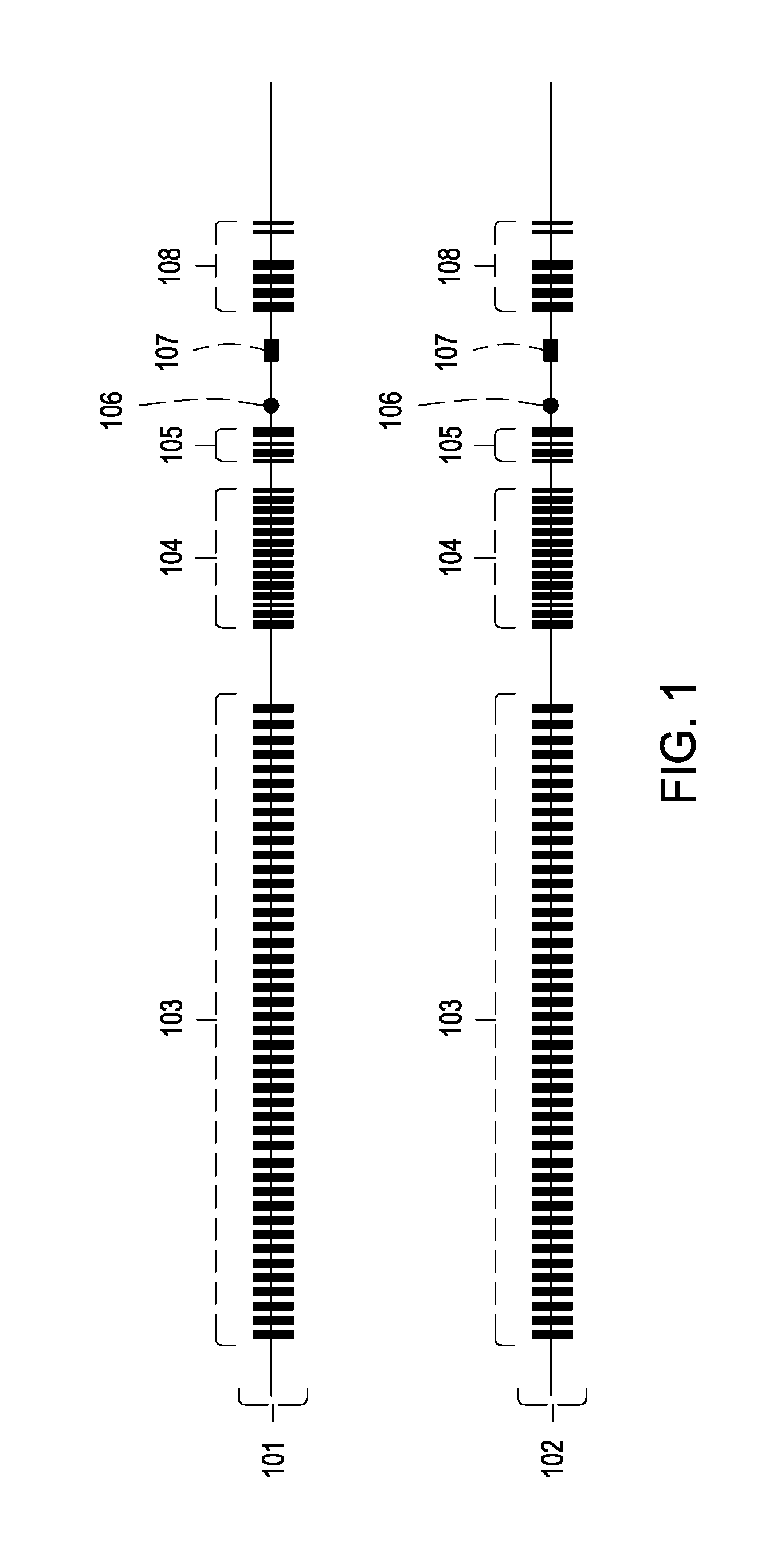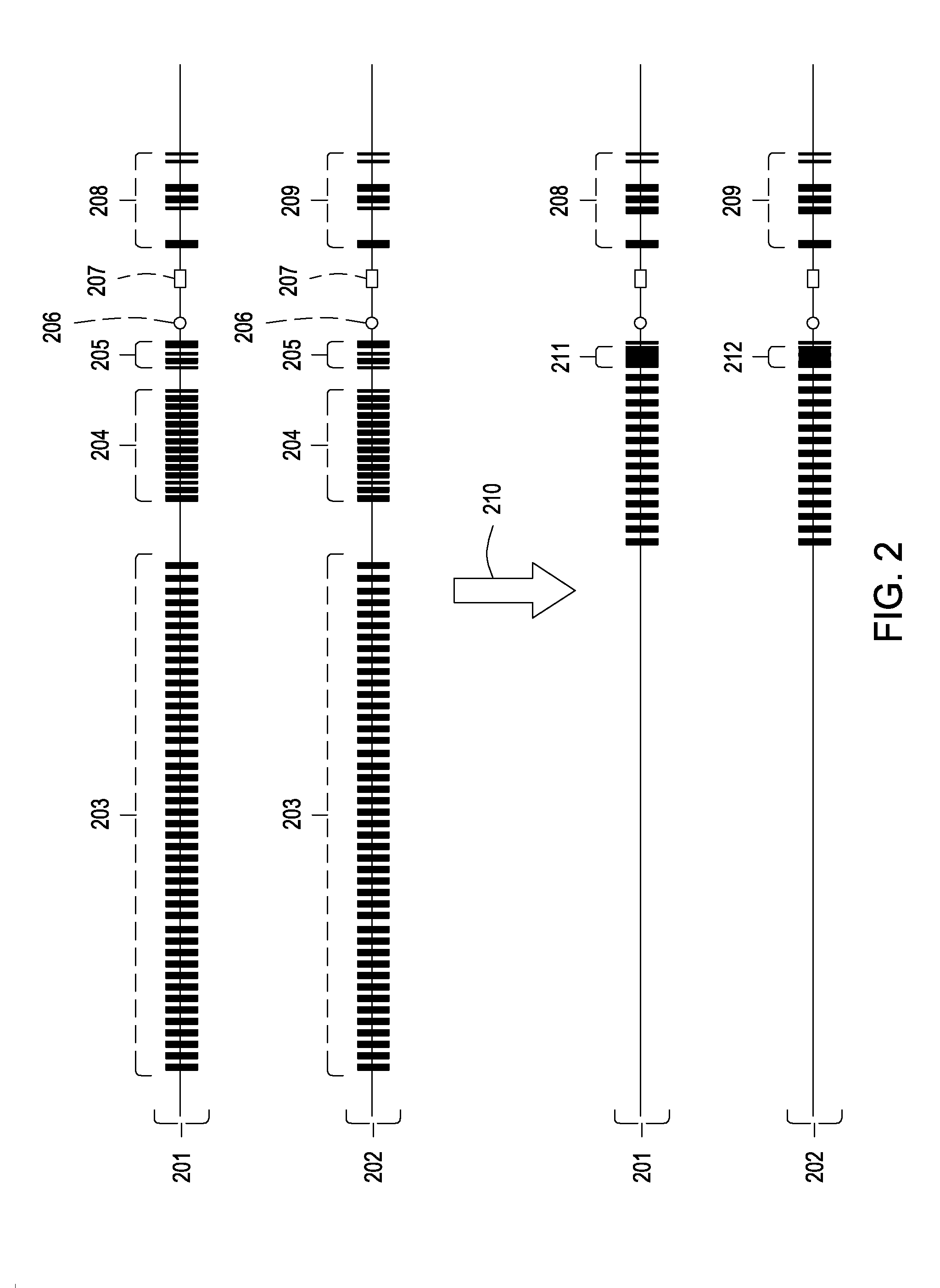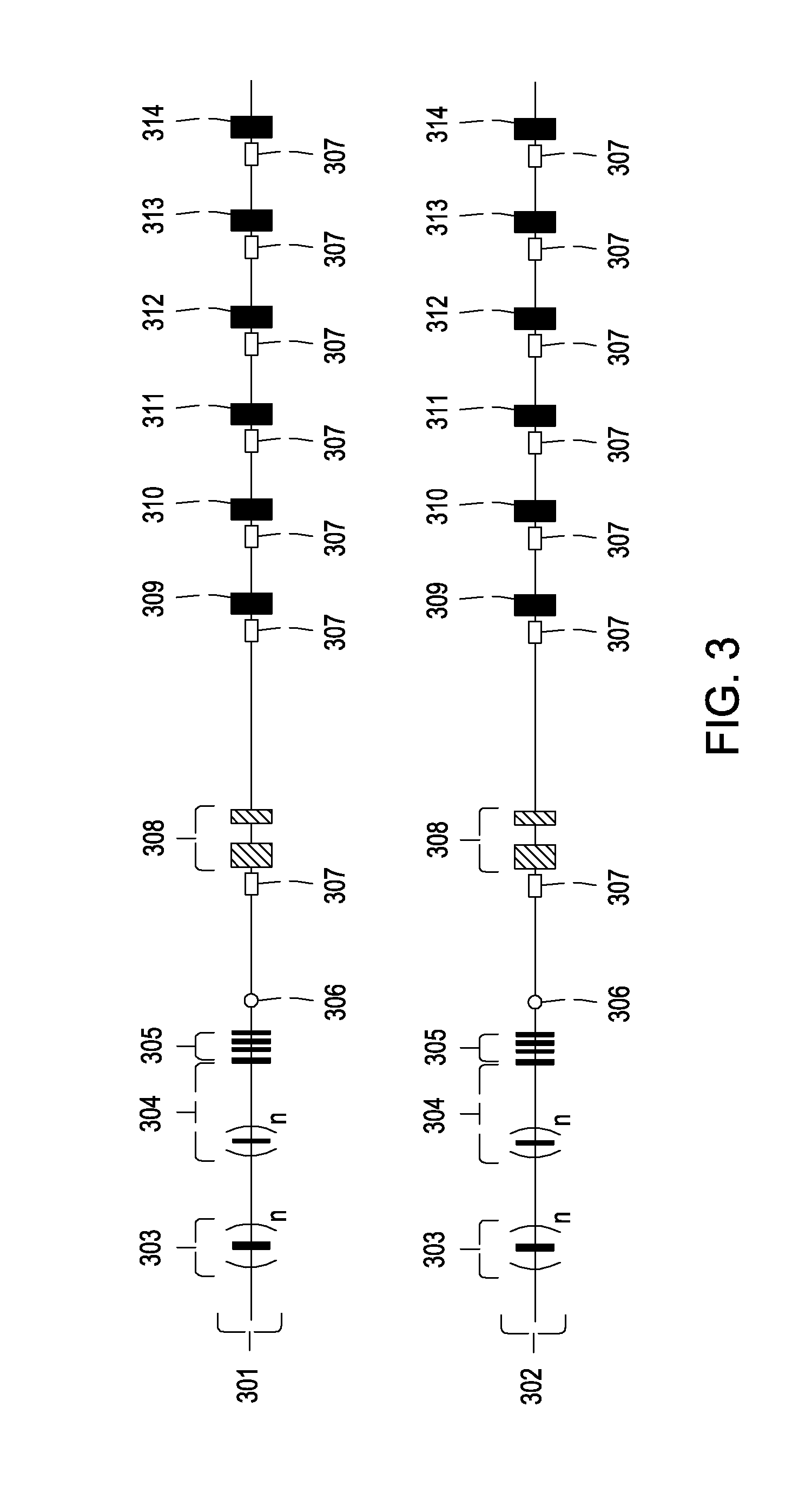Enhanced production of immunoglobulins
a technology of immunoglobulin and immunoglobulin, which is applied in the field of immunoglobulin production, can solve the problem of not being able to mediate allelic exclusion by reaching the cell surfa
- Summary
- Abstract
- Description
- Claims
- Application Information
AI Technical Summary
Benefits of technology
Problems solved by technology
Method used
Image
Examples
example 1
Engineered Heavy Chain Alleles Permissive for the Isolation of Bispecific Antibodies Following Simultaneous Immunization with Two or More Antigens
[0087]Transgenic mice are generated carrying two modified heavy chain alleles that lack the ability to isotype switch (as depicted in FIG. 2). Both alleles can undergo VDJ recombination. In a preferred embodiment, an IgG1 instead of IgM heavy chain is expressed during B cell development, but any other isotype including IgM may be employed. B cells expressing only IgG1 develop quite normally and respond to antigens during immunization (see, e.g., Waisman, et al., Journal of Experimental Medicine 204:747-758 (2007)).
[0088]The fourth exons of both IgG1 alleles, which encode the CH3 domains, are mutated such that they promote the formation of heavy chain heterodimers and suppress homodimerization. In preferred methods, the mutations are D276K, E233K, and Q234K on one heavy chain allele; and K286D, K269D, and T247D on the other heavy chain alle...
example 2
Engineered Heavy Chain Alleles Permissive for the Isolation of Bispecific Antibodies Following Sequential Immunizations
[0092]Transgenic mice are generated carrying heavy chain alleles that can be switched on or off by site-specific DNA recombination. One of the alleles is capable of expressing full-length heavy chains after a productive VDJ rearrangement, while the other allele lacks this functionality.
[0093]Both alleles contain recognition sequences for one or more site-specific recombinases, positioned within the constant domain-encoding locale. Site-specific recombination at these sites causes an inversion of a piece of DNA in both alleles, and as a consequence of this inversion, the constant domain functionality in the alleles is changed.
[0094]Site-specific recombination confers the capacity to express a full-length heavy chain protein on the allele that initially lacked this capacity. By contrast, site-specific recombination removes this capacity from the allele that initially ...
example 3
Alternative Engineered Heavy Chain Alleles Permissive for the Isolation of Bispecific Antibodies Following Sequential Immunizations
[0106]The methods described here are very similar to those described in Example 2. Transgenic mice are engineered to carry two heavy chain immunoglobulin alleles that can be switched on or off by a site-specific DNA recombinase system. The two alleles are designed for sequential immunization schemes similar to those described in Example 2, and consequently feature largely the same kind of functionality in their constant domain locales. Where the alleles differ is in the inclusion of elements designed to improve the efficiency with which the desired kind of bispecific B cells are isolated.
[0107]This embodiment is depicted in FIG. 5. On one of the two engineered heavy chain alleles (allele 501), a DNA cassette (512) flanked by two recognition sequences (509 and 510) for a site-specific DNA recombinase is inserted after the heavy chain enhancer (505) but be...
PUM
 Login to View More
Login to View More Abstract
Description
Claims
Application Information
 Login to View More
Login to View More - R&D
- Intellectual Property
- Life Sciences
- Materials
- Tech Scout
- Unparalleled Data Quality
- Higher Quality Content
- 60% Fewer Hallucinations
Browse by: Latest US Patents, China's latest patents, Technical Efficacy Thesaurus, Application Domain, Technology Topic, Popular Technical Reports.
© 2025 PatSnap. All rights reserved.Legal|Privacy policy|Modern Slavery Act Transparency Statement|Sitemap|About US| Contact US: help@patsnap.com



